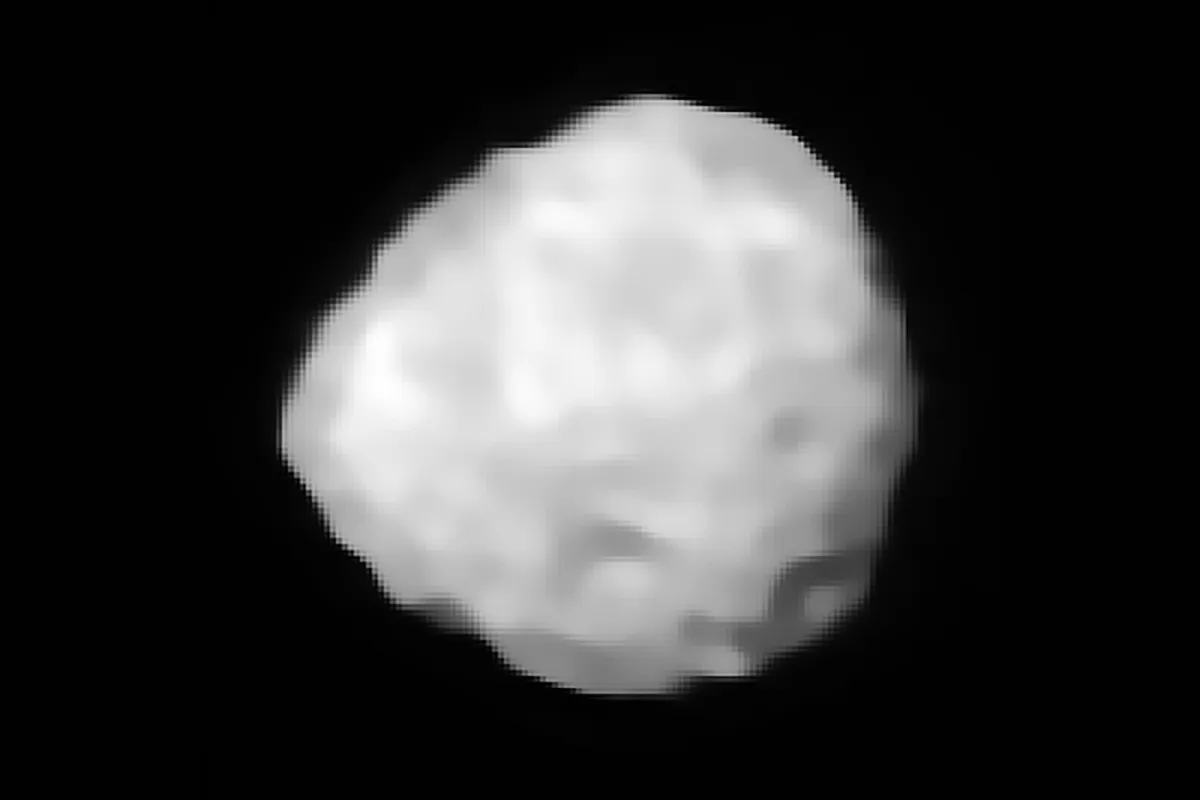Minor planet 7 Iris reaches opposition on 28 June when it will appear at a binocular-friendly mag. +8.8 in Sagittarius. It starts its June track to the west of the lip of the Teaspoon asterism, about 40 arcminutes west of mag. +3.5 Xi2 Sagittarii and just to the north of mag. +5.7 33 Sagittarii.
On 1 June, Iris will be shining at mag. +9.6. As it approaches opposition on 28 June it will pass about 1.5° south of the rich, mag. +4.9 open cluster M25.
Iris has a mean diameter around 241km, its tri-axial ellipsoidal measurements being 268 x 234 x 180km. A tri-axial ellipsoidis a three-dimensional, oblate ellipsoidal shape, which offers a convenient way to approximate the dimensions and size of an irregular shaped body such as an asteroid.
It’s an S-type, stoney asteroid: S-types make up around 17% of all known asteroids.
The orbit of 7 Iris

7 Iris was discovered by the English astromoner John Russell Hind on 13 August 1847. It was his first asteroid discovery.
It orbits in the main asteroid belt between Mars and Jupiter. It takes 3.7 years to complete an orbit of the Sun, moving out to 2.94 AU at its farthest point, aphelion, and in to 1.83 AU at its closest, perihelion.
At favourable oppositions it can reach mag. +6.7 making it the asteroid belt’s fourth brightest object. At its dimmest it approaches mag. +11.4.
Its mean opposition magnitude is +7.8, meaning this month’s appearance is a magnitude below par.
Its dim starlike appearance will make identifying 7 Iris challenging because it’ll be passing through a region of sky rich in faint background Milky Way stars.
The best way to identify it will be to sketch or image the region where you think it should be located and repeat this process over a few days, weather-permitting. If you have the correct area, you should see Iris moving slowly between results.
Pete Lawrence is an experienced astronomer and a co-host of The Sky at Night. This guide originally appeared in the June issue of BBC Sky at Night Magazine.
